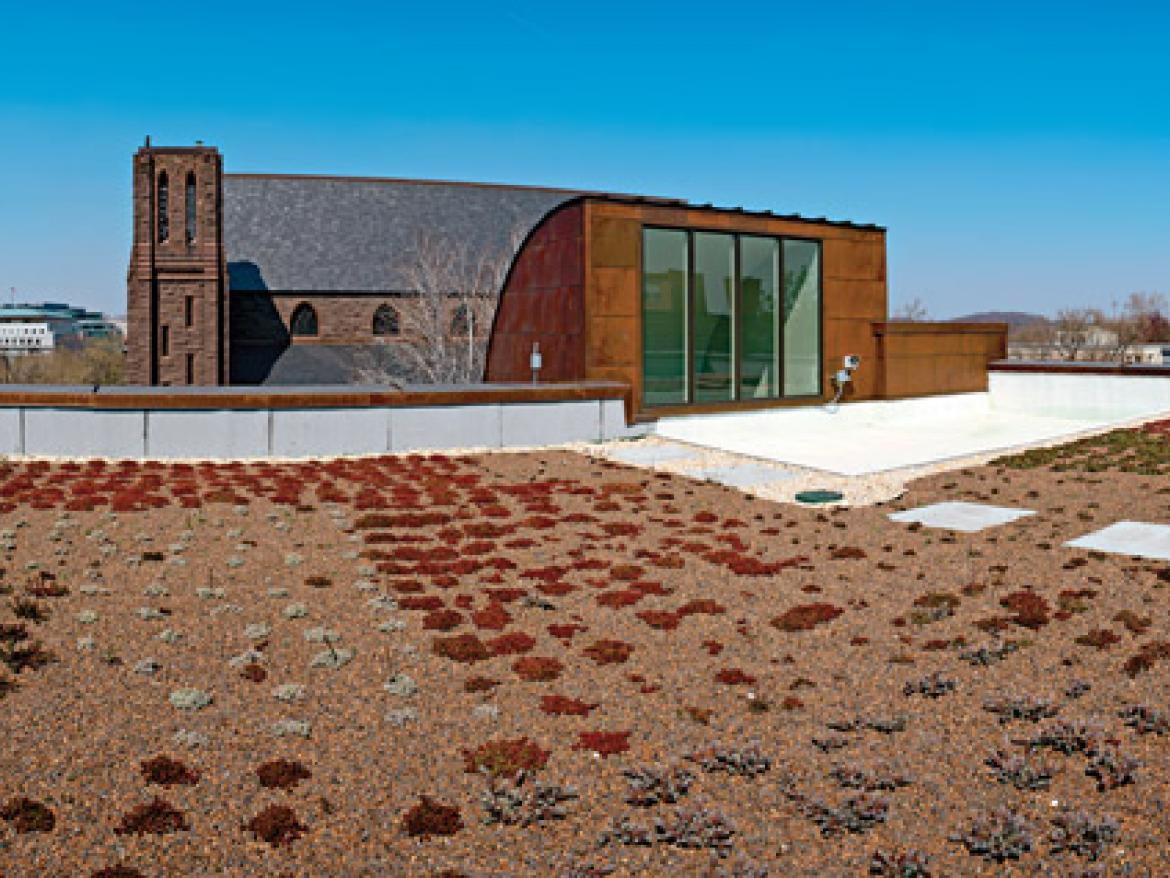When FCNL finished renovations in 2005, it earned a notable honor: 245 2nd Street became the first green building on Capitol Hill in Washington, D.C. Now, more than a decade later, FCNL’s drive to minimize its environmental footprint has earned it a platinum rating, the highest level for a green building.
For over a decade, FCNL held a Leadership in Energy and Environmental Design (LEED) silver certification, signifying that it meets crucial benchmarks in maintaining an environmentally responsible building.
LEED is a program of the U.S. Green Building Council (USGBC). It measures and defines what makes a green building. There are four levels: certified, silver, gold, and platinum. From silver, FCNL has vaulted to platinum.
The push to meet this mark has been led by FCNL’s facilities team, led by Ato Stephens. The team has been working hard to ensure that FCNL excels in the main categories analyzed by USGBC: energy usage, water usage, waste, transportation, and human experience.
The building’s original green features from the renovation remain impactful. The geothermal heating and cooling system, which uses ten 350-foot wells to take advantage of the Earth’s natural temperature, is 45 percent more energy efficient than a standard HVAC system. Energy-efficient windows and the rooftop “light scoop” allow plenty of natural light without sacrificing insulation.
The building’s original green features from the renovation remain impactful.
Much of the building’s interior is made from renewable and sustainable materials—the bamboo flooring, carpeting, and ceiling tile. Low-flow toilets help minimize water use, too.
But the crowning feature may be the green roof, which insulates the building and lowers the urban “heat island” effect. Covered in attractive drought-tolerant plants, the roof is easily spotted from the Hart Senate Office Building and has frequently attracted visitors from Capitol Hill curious to learn more.
However, as former FCNL executive secretary Joe Volk notes in a 2007 Roll Call article, “Green buildings aren’t just the physical place, they are also how people live and work.”
To encourage more eco-friendly modes of transportation, FCNL provides employees with bike parking, a shower, and a stipend for Metro use. The result, says facilities coordinator Ato Stephens, is that most people at FCNL don’t rely on a car to get to work.
But the drive to be green is about more than awards. FCNL seeks an earth restored, and making the home base for Quaker advocacy as eco-friendly possible is a way of putting our values to practice.
Making the home base for Quaker advocacy as eco-friendly possible is a way of putting our values to practice.
According to the Alliance to Save Energy, buildings account for 40 percent of U.S. energy consumption and 70 percent of electricity consumption. They emit over one-third of U.S. greenhouse gas emissions, more than any other sector of the economy.
With FCNL’s location on the doorstep of Congress, 245 2nd Street is an example of what’s possible. Although the adjacent Quaker Welcome Center at 205 C Street is not LEED-certified, it was renovated following LEED guidelines.
The center has a solar roof, which generated 581 kWh in January. This is equivalent to 1,648 lbs. of carbon emissions saved, or 41 trees planted. Since more power is generated than is needed by the center, the excess is sold to the power company.
“We believe that Congress should address climate change and shift towards a clean energy economy,” said Thomas Swindell, FCNL associate general secretary for administration and finance. “But we don’t only believe it—we practice it. Our LEED certification, green roof, and solar panels, to name a few, manifest the fact that with every opportunity presented, FCNL takes advantage of using energy efficient tools.”

